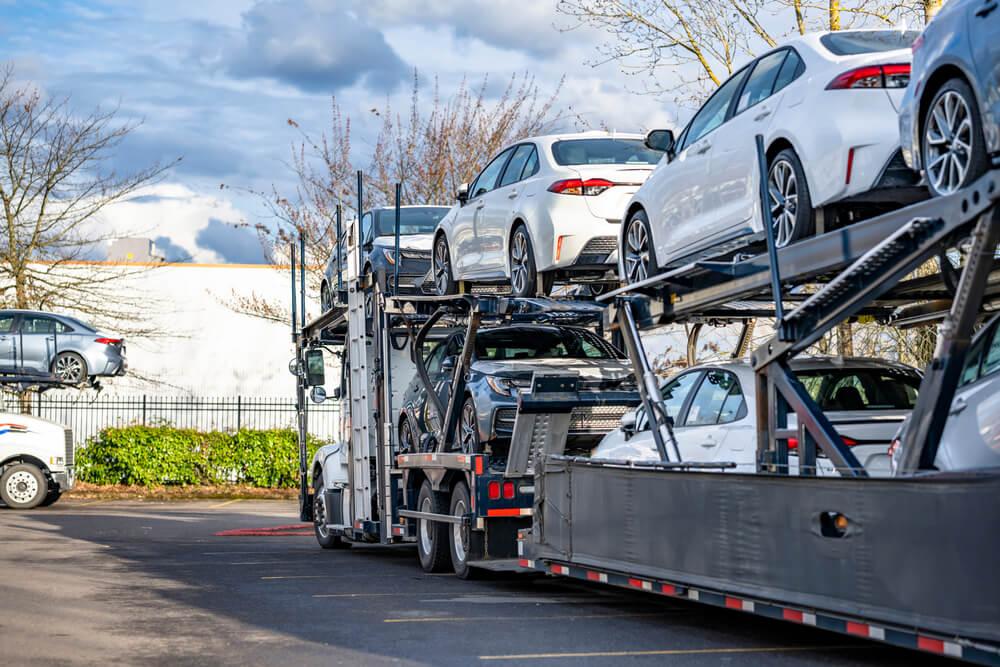
While the exact duration for shipping a car from California to Texas isn't specified, various factors, such as the distance between the two states, chosen route, and carrier availability, significantly impact the timeframe. Typically, such a journey may range from a few days to over a week, depending on these variables.
The process of shipping a car from California to Texas is influenced by multiple factors determining the overall duration. Though a specific timeline is not provided, the distance covered, the route selected, and the availability of carriers are key determinants of how long the transportation will take. Understanding these aspects is crucial for anyone planning to ship a vehicle between these states.
Factors Influencing Car Shipping Duration
Car shipping duration depends on several factors. Distance and route are most important. Moving locally may take a few days, but shipping a car cross-country can take weeks. Congested urban areas and winding mountain roads have slower transit times than straight highways.

Season is another important factor. Bad weather can delay transit operations. Winter shipping can be slower, especially in snowy and icy areas. Transport type can also affect shipping time. Enclosed transport takes longer than open transport, but it protects the vehicle.
Car Shipping Methods and Their Time Differences
Open-air and enclosed auto transport are the main methods of shipping cars. The cheapest and most common method is open-air shipping. It uses an open-air trailer to transport multiple cars. The transported vehicles are vulnerable to weather and road damage. However, enclosed auto transport protects the vehicle from weather and road debris but costs more.
Transportation methods also affect delivery times. Open-air shipping may take longer because of the logistics of transporting 6–10 cars. However, enclosed auto transport is faster because trailers carry two to three vehicles. Route, distance, and season also affect car shipping time.
Preparation Steps Before Car Shipping
To ensure secure and efficient vehicle transportation, careful preparation is vital. Start by removing personal belongings from your car. These items may not be included in the carrier's insurance coverage. Thus, it is best not to leave anything valuable inside. Additionally, clean your vehicle's interior to prevent any potential damage or stains during the shipping process.
Next, conduct an extensive exterior cleaning of your car. A clean car allows for an easier, more accurate vehicle inspection. Document any existing dents, scratches, or other damage using clear pictures. This step is crucial as it establishes a record of the vehicle's condition before shipping, which is a reference should any dispute or claim arise. Remember, don’t forget to check your car's tire pressure and fluid levels as low or high levels might cause problems during transport.

Frequently Asked Questions
It's important to understand the steps involved in car shipping, including picking up and delivering the car, the documentation needed, and how costs are calculated. You should also know the different shipping methods and how each can affect the shipment timeline.
Multiple factors can impact the car shipping duration such as the distance of the shipment, the type of transport used (open or enclosed), the size and weight of the vehicle, and external factors like weather conditions, traffic, and road conditions.
The time difference between various car shipping methods can vary greatly. Shipping by open transport is usually faster but less protective, while enclosed transport is safer but may take longer. Also, domestic shipments are generally faster than international shipments due to less paperwork and shorter distances.
There are several preparation steps you need to take before car shipping. This includes cleaning the interior and exterior of your car, removing personal items, turning off the alarm, checking the car for existing damage, and ensuring your car is in good running condition.
You'll need to provide the car shipping company with proof of ownership, insurance documents, and a copy of your driver's license. The requirements may vary depending on the shipping company and the shipment's destination, so it's best to check with your chosen provider.






 Share on Facebook
Share on Facebook Share on LinkedIn
Share on LinkedIn Share on Twitter
Share on Twitter




 Google
Google  Instagram
Instagram  Trustpilot
Trustpilot 



